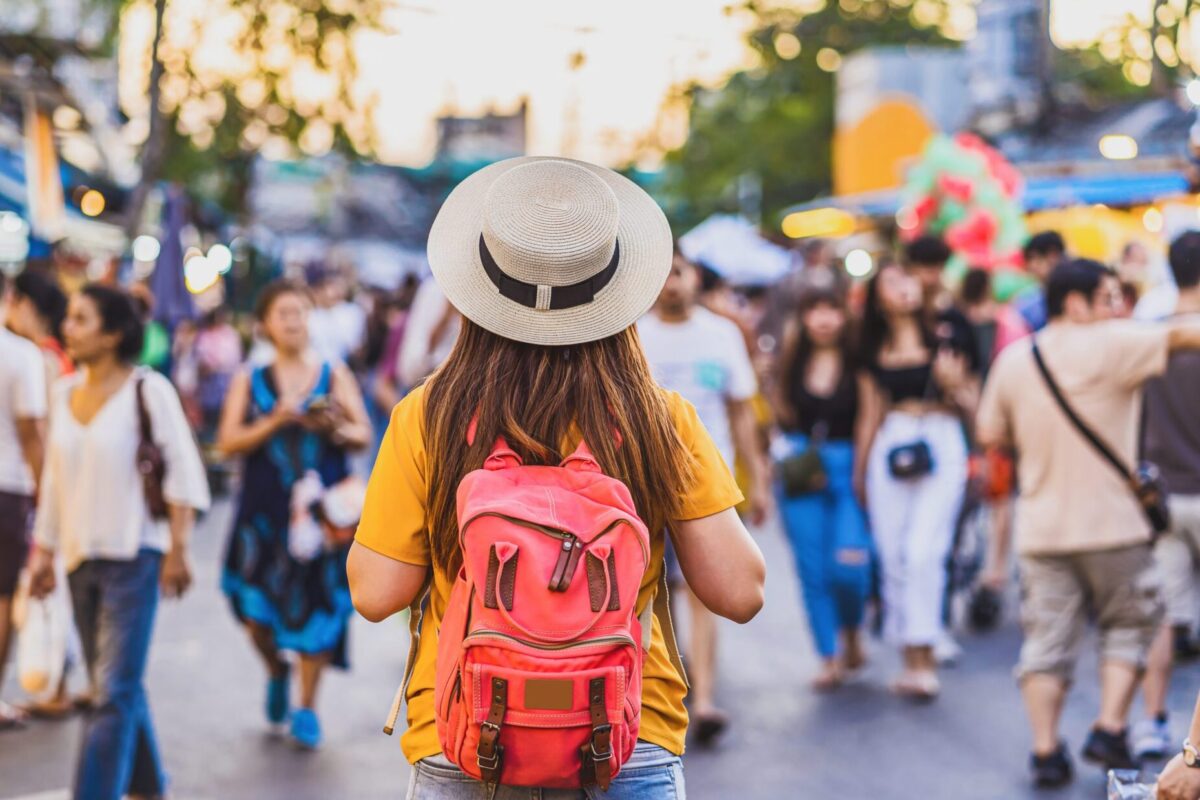Skift Take
As world travel slowly recovers from the pandemic, domestic travel in China remains subdued thanks to underlying weakness in household consumption and rising prices.
When graduate student Cai Zhishan decided to spend her Labour Day holidays in northern China, she wished she had enough money to hire a car for the more-than 4,000km (2,500 mile) round trip – the equivalent of driving from New York to Los Angeles.
Instead, she chose “travelling like special forces,” a new trend in China that has emerged as a symptom of the underlying weakness in household consumption, and which is casting a shadow over a post-pandemic recovery in domestic tourism.
Cai, 22, mostly took slow trains and buses as she made her way from the city of Hangzhou where she studies, around the northern Shanxi province, and back.
To get to the ancient temples, pagodas and grottoes she wanted to visit, she walked roughly 30,000 steps a day. For accommodation, she chose overnight trains and cheap hostel beds.
Over nine days, she spent just 2,500 yuan ($362).
“I don’t have much money, but I like to travel,” Cai said. “I can control the expenses, to go to many places for the least amount of money, but it is really tiring.”
On social media, the hashtag “special forces travel” – which refers to an aggressive assault on a tourist area to see and do as much as possible for as little money one can spend – went viral before and during the Labour Day break starting in late April.
Cai was inspired by the online discussions, like many other Chinese travellers who surprised with their thriftiness.
Ministry of Culture and Tourism data showed a boom in domestic travel this year, as many Chinese made up for the three years of COVID-19 restrictions that kept them largely stuck at home.
During the May holiday break, which for most Chinese covered the April 28-May 3 period, 274 million trips were made, up 19 percent from 2019 before the pandemic.
But total spending was 148 billion yuan ($21 billion), on par with 2019, meaning travellers spent an average of 540 yuan ($76.7) in 2023 versus 603 yuan ($85.7) in 2019.
In another sign of tight pockets, international trips by Chinese tourists this year remain a fraction of pre-pandemic levels.
“Chinese overall are not ready to spend as much as before and, even if the government tries … to entice consumption and reduce excess savings, I doubt it will manage,” said Alicia Garcia-Herrero, chief economist for Asia-Pacific at Natixis Research.
“People need jobs and higher wages to start spending big again.”
Domestic consumption, which Chinese policymakers want to play a greater role in powering the world’s second-largest economy, has recovered since COVID restrictions were lifted in December, but has consistently underwhelmed so far this year.
China’s struggling property market, record high youth unemployment and broader worries over job stability, as well as government parsimony on wages, pensions and medical benefits are keeping consumers cautious, analysts say.
Data on Tuesday showed retail sales up 18.4 percent in April from last year, when Shanghai was under lockdown, undershooting expectations of a 21.0 percent rise. Consumer confidence has bounced from last year’s record lows, but remains below the range of the previous two decades.
One travel blogger, who posts on the Instagram-like social media app Xiaohongshu under the name of Icecube, told Reuters he slept overnight in a public toilet to save money on a trip to Huangshan mountain in the southern Anhui province.
“It’s worth it,” said the blogger, who declined to give his real name.
“Although I suffered a little, I spent the least money possible to see beautiful scenery. In the future, I may consider adding a little to the budget to improve accommodation conditions.”
For those betting on consumption gathering speed as the year progresses, maybe not all is lost.
Beijinger Xing Zicong, 23, tried to visit the historical silk road city of Xi’an on a shoestring, but found it too uncomfortable and ended up spending more money than planned.
“Maybe I didn’t wear the right shoes, but my feet started to hurt after walking more than 10,000 steps,” she said, joking that she exemplified “the battle-scarred version of special forces travel.” ($1 = 6.9121 Chinese yuan renminbi) (Reporting by Casey Hall and Shanghai newsroom; Editing by Marius Zaharia and Lincoln Feast.)
This article was written by Casey Hall from Reuters and was legally licensed through the Industry Dive Content Marketplace. Please direct all licensing questions to [email protected].

Get Skift Research
Skift Research products provide deep analysis, data, and expert research on the companies and trends that are shaping the future of travel.
Have a confidential tip for Skift? Get in touch
Tags: china, china travel, coronavirus recovery, tourism, Travel Trends
Photo credit: Back side of Young Asian traveling women. The global travel industry will need to prepare for a new kind of Chinese traveler. Source: Adobe THANANIT / Adobe
